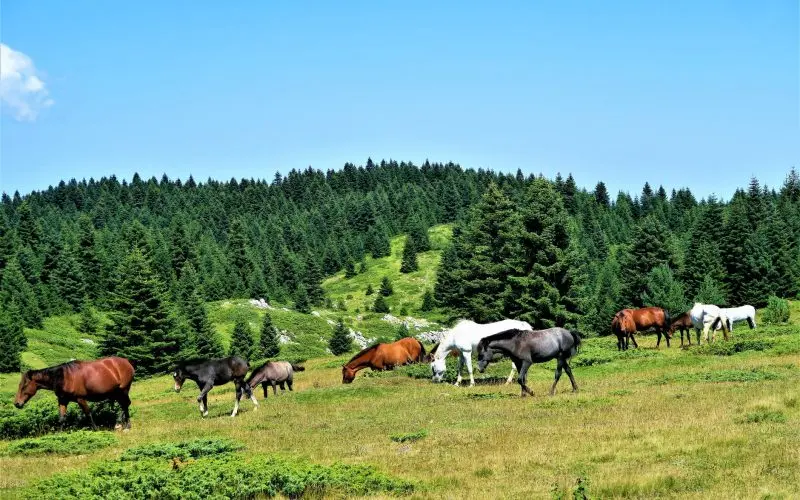Table of Contents Show
But first, What is Biodiversity?
Biodiversity is a measure of variation at genetic, species and ecosystem levels. It helps to boost the ecosystem and its productivity where every species have a meaning and a role no matter how small. For example, a large number of plant species mean a great variety of crops. Many of the species are yet undiscovered, close to 90 percent, because the biosphere is so complex.
Worldwide number of species estimates range from 3.6 million to over a 100 million animal species. The Marine life has approximately 8.7 million species.
How does biodiversity contribute to the sustainability of an ecosystem?
It’s a widespread belief that higher biodiversity leads to more sustainability or vice versa against the external stressors.
This is because all species depend upon each other in terms of food; keeping birth and death balanced in a way that the ecosystem remains sustainable and balanced.
If any of the species that does not play a vital role to make the ecosystem sustainable suddenly disappears from the ecosystem, it would not create an impact to the ecosystem as a whole. However, if the species which plays a major role in ecosystem sustainability gets extinct, it would lead to a much weaker ecosystem. The species that play major roles in an ecosystem are sometimes known as Keystone Species.
Benefits of Biodiversity to the Ecosystem
Biodiversity is constantly playing a vital role in the existence and sustainability of ecosystems. It acts as a catalyst in the role of species in an ecosystem. Biodiversity also benefits the humans in numerous aspects.
The benefits provided by biodiversity to humans and the ecosystem are vast and include:
- Nutrient cycling
- Carbon sequestration
- Pest regulation
- Pollination
- Sustain agricultural productivity
- Clean air and water
- Climate regulation
- Gas exchange
- Formation of soil
- Suspension of human diseases
- Medicines production for food, fibers for textiles, fuel and energy
Other benefits of biodiversity:
As we all know that most of the medicines are extracted from plants and as mentioned above it is one of the major services provided by biodiversity. Harnessing these benefits requires special attention because any of them could be life-threatening for humans. There are around 35000 to 70000 plant species that have been screened for their medical use.
It is estimated that plant-derived drugs would contribute 39.2 billion dollars in sales by 2022 and botanical drugs to $425 million by 2022.
Antibiotics, anticancer drugs, blood clotting agents and thinners, anesthetics, cardiac regulators and few suppressants are among the drugs that are extracted from wild biodiversity.
As claimed by US National Cancer Institute, Rainforests consist of seventy percent of the plants having anti-cancer characteristics.
Rainforests include various species which have adapted to amazing defenses against predators, infections, pests and diseases over thousands of years. These defenses can be used by humans fight against cancer and serious diseases.
As humans, we evolve with the environment around us. Our identity and history is embedded within it. It’ll be socially disassembling if the ecosystem fails, which brings us to another benefit of biodiversity which includes cultural, spiritual and recreational values. This proves that nature contributes to the wellbeing of humans and makes us more resistant.
An appreciation of biodiversity can be seen as parks are made in urban areas to showcase the deep feeling of interconnection of humans with other species on earth.
What are the different levels of biodiversity?
It has been examined by the scientists that biodiversity occurs on three levels. The genetic level, the species level and at the level of ecosystems; sustaining life within them.
1. Genetic diversity level
Every form of life from microbes to plants to humans contains genes.
A Gene carries information of individual cells in plants, animals and microorganisms. Species reproduce and the genes of an individual contribute to the characteristics of the progeny. Therefore, all the members of the species are not alike due to genetic variation/ genetic diversity.
Genetic diversity helps to maintain the health of the population by including alleles which are valuable in resisting pests and diseases. As the environment changes, the population which has higher variability of alleles would adapt to the new environment easily. An allele is an alternate form of a gene.
As the research suggests, the population with more genetic diversity has a better chance of surviving environmental changes.
Nowadays, genetic erosion of crops is an issue of concern. Few major crops are feeding most of the world which is quite alarming. If a pest threatens any of these crops, the entire food supply of the world will be affected. This is one of the major cons of Monoculture Farming.
Many regulatory bodies are working around the world to minimize the loss of genetic erosion by saving the seeds of the crops best able to provide high yield of nutritional content.
2. Species diversity level
In simple words, species are defined a group of individuals with similar capabilities of interbreeding and producing offspring.
Species diversity is a number of different species that are representing a given community. For example, humans, birds, bears and dogs.
There are three elements which are looked upon to classify biodiversity at the level of species.
- Species richness: The number of species which exist within the community.
- Genetic relationship between different groups of species or phylogenetic diversity: This includes common ancestry of a species or organisms.
- Species evenness: The comparison of the number of each species. For example, are there ten times more deer than fox?
The ecosystem gets healthier with more variety of species. More links in the food chain makes everyone healthier up the chain.
It is important for species to have diversity in order to maintain resilience against unanticipated events, For example, natural disasters such as earthquakes, tsunamis, volcanic eruptions and more
Species which are similar are insensitive to species loss due to the variations in ecosystem type. These species are unimportant, which is why it does not make much of a difference if they go extinct. However, there are a few species upon which the ecosystems are balanced. Such species are known as Keystone Species.
3. Ecosystem diversity level:
Ecosystem consists of all the animals, microorganisms, plants as well as the physical aspects of the area.
The variation in ecosystems within a geographical location and its impact on human existence and the environment is ecosystem diversity. The earth itself sets an example of ecosystem diversity as it contains forests, oceans, deserts and wetlands.
Ecosystem is more diverse when it contains varied landscapes, creating more space for shelter and escapes which allows the rapid growth of plants as a food source and making adaptation easier for species.
Why is biodiversity one of the earth’s greatest resources?
At the most fundamental level, biodiversity provides the basis of life on earth. Ensuring benefits like clean water and air, fertile and healthy soil, and whatnot.
Sustainability helps the ecosystem in maintaining ecological processes. The ecosystem has to maintain these processes over an extended time period along with facing the external stresses such as fire and pollution. This sustainability can only be achieved with the right amount of biodiversity.
Our human life depends upon the biodiversity which the ecosystem provides. If many of the species go extinct or our ecosystem fails, humans would not be able to survive on earth.
Where is the highest level of biodiversity on our planet?
The highest level of biodiversity on our planet is on the rainforests. They have the sunlight, rainfall and varied topography which produces many habitats for different species.
Over the years it was believed that Amazonia had the richest ecosystem on earth but later on in a scientific study by The Center for Tropical Forest Science and many others in 2002, it was stated that there were a greater number of species in tropical forests over a greater distance in Panama.
The Indian and Pacific Oceans are considered to have the most diverse marine environments due to their warm waters.
How is the biodiversity of an ecosystem measured?
Biodiversity is measured in richness and evenness of the species in an ecosystem.
The ecosystems having fewer dominant species are considered balanced. More numbers of dominant species means that the ecosystem consists of an imbalance of the species. The unevenness would result in a domino effect.
It is vital to maintain a huge number of different species to help ensure the existence of a healthy planet.






